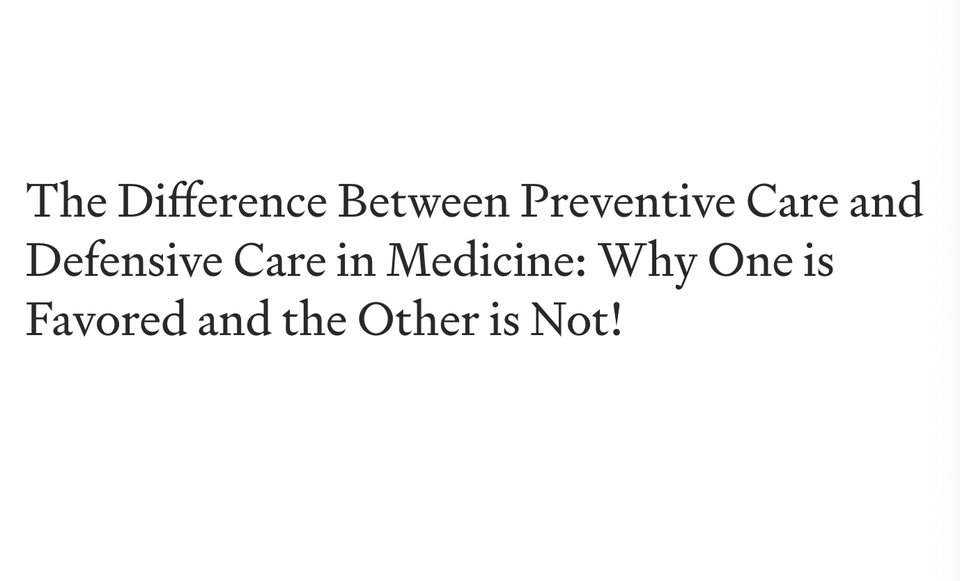The Difference Between Preventive Care and Defensive Care in Medicine: Why One is Favored and the Other is Not!
Table of Content
In the realm of healthcare, understanding the distinctions between different types of medical care is crucial for both patients and providers. This article explores the concepts of preventive care and defensive care, highlighting why one is encouraged while the other is often discouraged.
What is Preventive Care?
Preventive care involves measures taken to prevent diseases or injuries before they occur. This proactive approach aims to maintain health and well-being. Examples include vaccinations, regular check-ups, and screenings like mammograms and dental cleanings.
The benefits of preventive care are manifold: it can lead to early disease detection, improved health outcomes, and reduced healthcare costs by avoiding expensive treatments later on.
What is Defensive Care?
Defensive care refers to medical practices primarily aimed at avoiding malpractice lawsuits rather than benefiting the patient. It often involves ordering unnecessary tests or procedures to minimize legal risk. For instance, a doctor might order a CT scan for a patient with a simple headache to rule out rare conditions, even if it's unlikely. This approach can lead to overtreatment, increased healthcare costs, and potential harm from unnecessary procedures.
Comparison: Why One is Encouraged and the Other is Not!
Impact on Patient Outcomes:
Preventive care enhances patient health by focusing on early intervention and disease prevention. In contrast, defensive care can lead to unnecessary interventions that may harm the patient without providing clear benefits.
Impact on Healthcare Costs:
Preventive care is cost-effective, reducing the need for expensive treatments down the line. Defensive care, however, contributes to healthcare inflation by increasing the demand for unnecessary procedures.
Ethical Considerations:
Preventive care aligns with the ethical principle of beneficence, aiming to do good for the patient. Defensive care, while sometimes justified in specific situations, often prioritizes legal protection over patient well-being.
Addressing Defensive Care: Potential Solutions
To reduce defensive care while maintaining patient safety, several strategies can be employed:
- Legal Reforms: Reforming malpractice laws to protect physicians who follow evidence-based guidelines can reduce the incentive for defensive practices.
- Promoting Transparency: Encouraging open communication between patients and providers about the necessity of tests and procedures can build trust and reduce the need for defensive measures.
- Education and Communication: Educating both providers and patients about the risks and benefits of interventions can foster a more informed and collaborative approach to care.
Conclusion: The Way Forward for a More Effective Healthcare System
Preventive care is a cornerstone of effective healthcare, offering benefits in terms of health outcomes and cost efficiency. In contrast, defensive care, while sometimes necessary, often leads to unnecessary procedures and increased costs.
By addressing the root causes of defensive care and promoting a culture of transparency and communication, healthcare systems can move towards a more patient-centered and efficient approach. Patients, providers, and policymakers alike should strive for a balance that prioritizes preventive care and minimizes unnecessary interventions, ensuring a healthier future for all.











